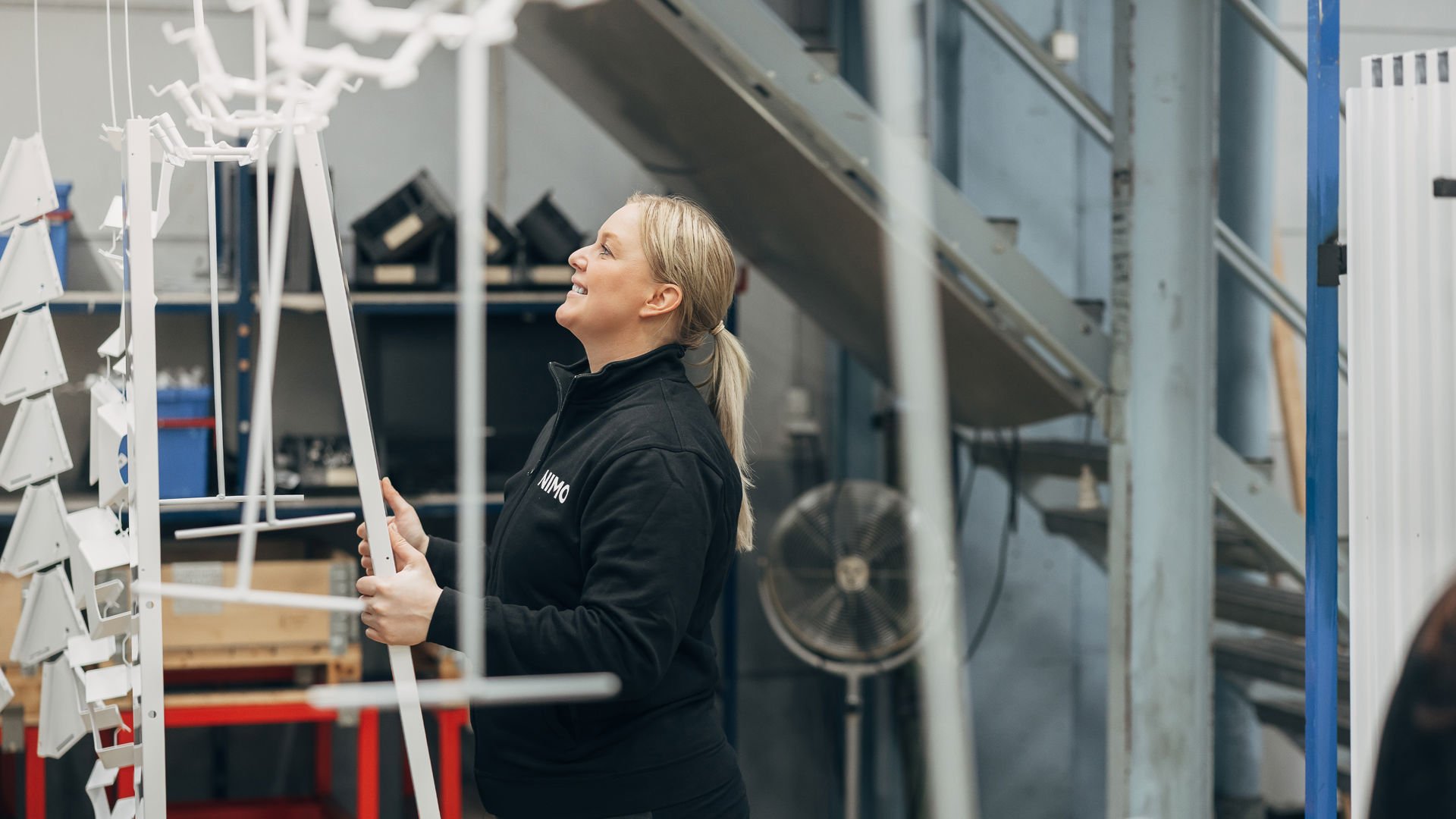Part 5: From order to finished product
The drying cabinet – Built on insight, shaped by experience
Once a drying cabinet has passed testing and been approved for production, the next critical phase begins: manufacturing. This is where engineering turns into tangible results, and every choice made earlier in the process gains real world relevance. It’s not just about assembling components – it’s about ensuring that every unit leaving the factory meets the standard of quality, function, and durability that defines NIMO’s offering.

From blueprint to production
The process begins in the sheet metal department, where components are shaped through punching, bending, and welding. Material flow is tightly synchronized: parts are painted the day before assembly, then the cabinet is built on the production line. Each step is timed and coordinated to keep the flow efficient without compromising precision.
The lead time from raw material to finished product is typically three to four working days. This short window places high demands on interdepartmental coordination – but also allows NIMO to meet demand with flexibility and accuracy.
Powered by technology
Several digital systems support production by providing structure and traceability. In sheet metal processing, nesting optimization minimizes material waste. In the paint shop, surface finishes are tracked through the MUR system. On the assembly line, real-time production goals are managed via the PLIS takt board. Each assembly station is timed, and tasks are confirmed step-by-step – creating transparency and control across the line.
Built-in quality
Quality assurance is embedded throughout the process. Visual inspections, micrometer measurements, first-piece checks, and functional testing are all part of ensuring the final product meets expectations. Every cabinet undergoes an electrical test and final inspection before packaging. In addition, random audits are performed regularly.
All checks rely on calibrated equipment and well-established procedures. New employees receive a structured onboarding program with focus on precision and quality. This is essential to maintaining high standards over time – regardless of production volume.
Sustainable choices
All components used in production must meet REACH and RoHS compliance standards. This is essential not just for functionality, but also for minimizing environmental impact and upholding product responsibility. Building a drying cabinet is also a commitment to a more sustainable manufacturing chain.
At this stage, the cabinet is no longer a concept, a model, or a prototype. It’s a real, fully tested and quality assured product – ready for the market.
